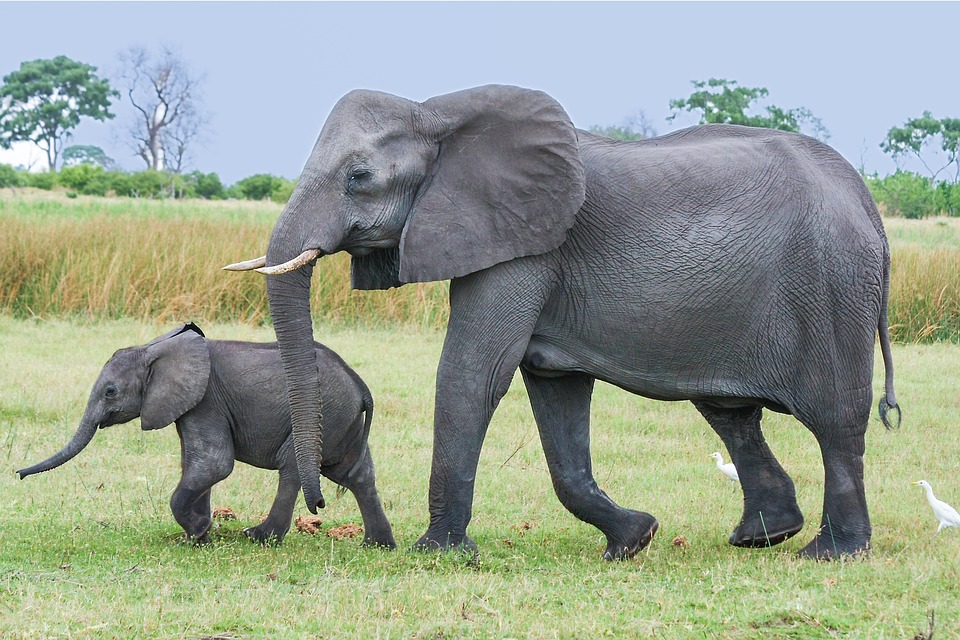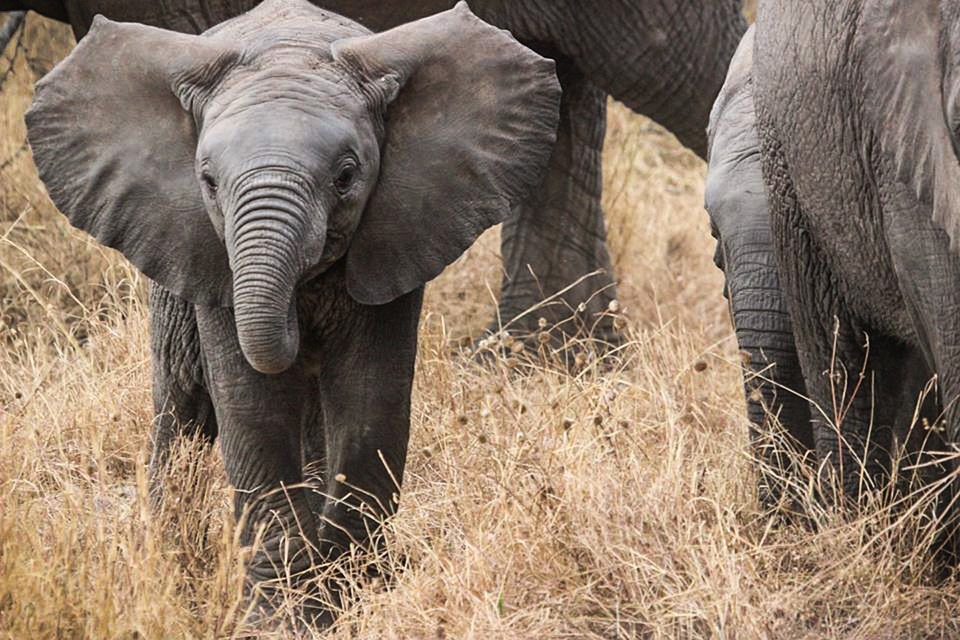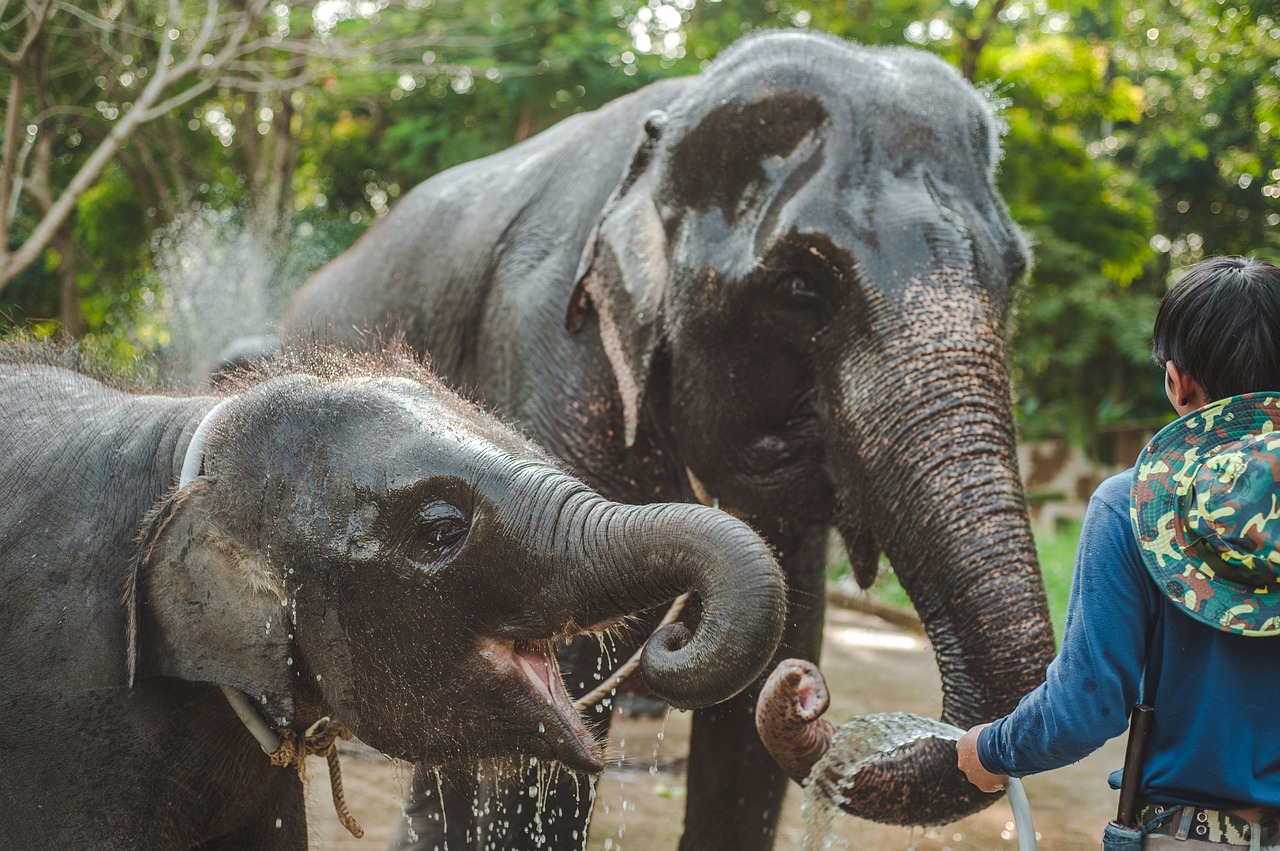 Get ready to trumpet! World Elephant Day falls on August 12th every year and to coincide with this special event, we’ve been examining the fascinating language of elephants. Read on for an exploration of elephant language, how to read the signs of elephant body language and vocalisations and how far these intelligent animals can understand human language.
Get ready to trumpet! World Elephant Day falls on August 12th every year and to coincide with this special event, we’ve been examining the fascinating language of elephants. Read on for an exploration of elephant language, how to read the signs of elephant body language and vocalisations and how far these intelligent animals can understand human language.
Did you know that elephants have their own language? Elephants live in social groups, so communication with friends and family is vital part of their daily life.
Elephant language combines smells, sounds and sign language to communicate many different complex messages. A simple curl of the trunk or a flap of an ear could indicate an important warning or piece of information.
Rumbling in Elephant Language
Animals all have their own way of communicating. Animal language can tell more about human language development and evolution. Like all animals, elephants have many distinctive signs and sounds that can convey various subtle meanings.
Rumbling is a common sound used in elephant language to convey many different emotions, from greetings to warnings. Elephants vibrate their vocal cords to produce a low rumbling sound. These low pitched sounds are often below the limits of human hearing (20 Hz) in a range called infrasound.
If an elephant wants to move in a certain direction, she will raise her foot and swing in the direction of intended travel. This gesture is accompanied by a rumbling sound to tell the group she is ready to move on.
These rumblings can be detected by other elephant groups that are miles away. Even though the sounds are faint and often too low for humans to hear, another elephant group might freeze on hearing a distant rumble, so they can focus on the noise and work out what it means.
Elephant rumbling can also be felt in the ground as vibrations. Elephants can feel vibrations in the ground from other animals’ movements, earthquakes and human visitors. This sensitivity to vibration and sounds is an important part of elephant survival.
In fact, elephants produce different rumbling sounds depending on the type of threat detected. For example, studies have shown that a swarm of bees can make elephants produce one sound, but a group of tribesman produces different rumbles from the elephants.
Trumpeting in Elephant Language
In addition to low rumbling, elephant language includes many other types of sounds, such as screaming, roaring and trumpeting to give different messages. The position of the ears in combination with different sounds can also add emphasis or a change of meaning.
Trumpeting is a very different sound to rumbling. A trumpeting sound is usually a sign of distress and is often accompanied by running and lifting the trunk into the air. For example, if a calf is in distress it will trumpet to call its mother.

Elephant mother and calf – image source
The Trunk in Elephant Communication
The trunk is a highly important tool in elephant communication. When an elephant lifts its trunk into an S-shape, it is sniffing the air. This act of lifting the trunk helps the elephant to detect scents, which is an important part of elephant behaviour and elephant language.
Smelling is used to give an elephant more information about a situation, such as when meeting strangers. Sometimes the elephant will hold its trunk straight out in a rigid line while smelling the air.
When with its calf, a mother elephant often uses its trunk to guide her offspring. The trunk is used to comfort and caress the elephant calf. Elephants wrap their trunk around the calf’s stomach, leg or shoulder to show support and protection. This gesture is often accompanied by a gentle rumbling sound.
Face touching is another common elephant gesture. In elephant language, a gentle face touch with the trunk is a reassuring movement. This can be an action towards another member of the group or as a self-touch when concerned about something or when making a decision.
Elephants are highly social and caring. When an elephant in the group is injured, other elephants will try to console, feed or rouse their friend by touching with their trunk. Studies have even observed elephants trying to lift and carry their dead friends.
Elephants have a great sensitivity, seem to understand death and have been observed paying homage to their lost relatives and holding vigils.
The Ears in Elephant Communication
The ears are important tools of communication in the elephant world. The ears can make an elephant look much bigger in size and for this reason they are an essential part of both defensive and aggressive displays.
Elephants will spread their ears to intimidate a rival. This action is often combined with raising the head to lift the tusks. Sometimes an elephant wanting to look more dominant will stand on a log or another object to increase its height and appear more threatening.
The ears can convey more subtle pieces of information too and are often flapped in greeting. Ear flapping can also be used as a way to cool down in hot weather.

A young elephant with its ears extended – image source
The Tail and Eyes in Elephant Communication
The tail is another important body part that can communicate a message in elephant language. When the tail is swishing gently, this is an indication the elephant is content, much like when a dog wags its tail. However, if the tail is stiff it could be a sign the elephant is anxious or fearful.
The eyes also betray a lot of information and much like in human body language, an elephant’s eyes can tell you a lot about its thoughts. Elephants will have half-closed eyes when truly relaxed, in a similar way to a cat, which blinks slowly when happy and content.
Wide eyes can be a sign of anxiety, intense interest or aggression in elephant language. Wide eyes are accompanied by extended ears and lifted head when the elephant is trying to look intimidating, such as when staring down a rival or defending the herd.
Translating Human Speech into Elephant Language
Elephant Voices is a research and conservation organisation led by director and cognitive scientist Dr Joyce Poole. The organisation works to advance the study of elephant cognition, communication and social behaviour.
Elephant Voices has worked collaboration with the David Sheldrick Wildlife Trust to produce a website called Hello in Elephant.
This is a project designed to raise awareness and drive donations for African elephants. It also uses the real calls of elephants along with decades of study into elephant communication in the wild to translate human messages.
Hello in Elephant can translate dozens of English phrases into a distinctive elephant call. The site helps users to translate many human concepts such as love, friendship, greeting and support into elephant language.
You can use the microphone or a text box to translate phrases such as ‘I love you’, ‘Hello’, ‘Goodbye’ or ‘Come on, let’s go!’. This interesting project helps humans to understand that elephants can communicate the same concepts and moods as humans.

An elephant family drinking and bathing in a river – image source
Elephants Can Identify Human Language
So we can turn our language into elephant language, but could they ever understand us? In fact, elephants have been shown to be able to detect subtle differences in human voices.
During a study into human sounds and elephant understanding, elephants were played voices from a hidden speaker. The voices were from the Kamba, a group of farmers who rarely encounter elephants, and the Maasai, cattle herders who often come into conflict with elephants.
When played a recording of Kamba voices they were uninterested, but when played a recording of Maasai voices, the elephants huddled together in a defensive group and sniffed the air.
The elephants could clearly understand the differences in voice tone and vocal inflections and realised immediately that this type of voice was associated with threat.
World Elephant Day
World Elephant Day falls on August 12th every year. This event was launched in 2012 to bring global attention to the urgent plight of Asian and African elephants.
The event raises awareness of the damage done to elephants by poaching, trade in ivory, habitat loss, human-elephant conflict and mistreatment in captivity.
We think World Elephant Day is the perfect time to celebrate these intelligent animals and explore the wonder and complexity of elephant language.

Young elephants enjoying a drink – Image source
World Elephant Day Lesson Ideas
If you are celebrating World Elephant Day in the EFL classroom, a great way to engage students with the event is to discuss elephants and the dangers they face.
Students could read newspaper cuttings, watch documentaries and interviews with conservationists, visit the Elephant Voices website, and have conversations about their own experiences and views on elephant rescue and conservation.
Students could also write a short essay on the issues facing elephants, such as trophy hunting and illegal poaching, and share their thoughts on tourism and safari tours and how these might help or hinder conservation efforts.
Share your thoughts on elephant language and communication
Do you think animal communication can be as sophisticated as human language?
Have you encountered elephants in the wild on safari?
Do you know any other communication signals used by elephants?
How would you engage with World Elephant Day in the EFL classroom?
Share your opinions and experiences in the comments.
